Isla Isabela the "Galapagos of Mexico"

Where in the World are Margie and Peter?
Isla Isabela National Park and Wildlife Preserve

Forty-two years ago, Jacques Cousteau came to Isla Isabela, 86 miles southeast of Mazatlan, to film the mating habits of the majestic Frigate Bird as well as the island’s colony of Blue-Footed Boobies with their baby-blue feet and Brown Boobies with their lime-green feet. Today, the island remains a source of plentiful research for scientists from around the world who continue to come here to study these endangered species.
We met up
with a young team of students who were living on the island from the University
of Guadalajara’s Institute of Ecology.

They camp out amidst the Frigate rookeries (low level trees and bushes) and along the paths where Boobies lay their eggs on the ground. The nests are numbered and laid out on color-coded grids. Students and volunteers record activity daily including how many adults, when and how many eggs are laid and hatched, how often the nestlings are fed, when they become fledglings, flight fatalities etc, etc. Naturalists also study and film the elaborate mating dances, parading and sky-pointing rituals of the Booby population here. It was a thrill to speak with these young people who spend between 1-4 months on the island, in VERY primitive conditions, dedicated to learning more about these incredible birds and how we can keep them from extinction.
Frigates,
also known as Man-of-War birds, exist only on a few undisturbed islands in the
Pacific Ocean. We remember them vividly
from our visit to the Galapagos Islands in 2010.
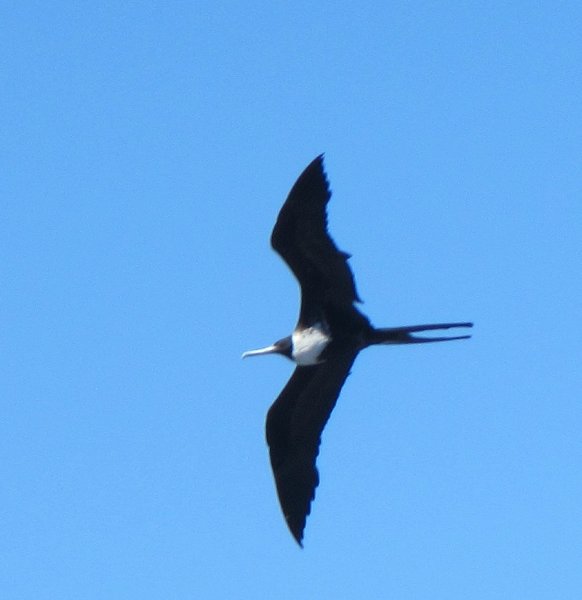
Adults can have a wingspan of up to 7 ½ feet but they weigh only about three pounds so they can glide expertly on the wind and fish with their long, hooked bills and sharp talons without having to dive or land on water. Here’s a close-up of a male Frigate Bird.

We arrived
at Isla Islabela when most of the Frigate nestlings had hatched. After a 45-day incubation period, the babies
(usually one, sometimes two) emerge pretty much naked. So both parents, who remain monogamous and
share parenting duties for 12 months, shield them 24/7 from the sun, wind and
predators.
The fuzzy, white, nestlings with their huge black eyes peek out from the nests.

In four or five months, nestlings become “fledglings” with the arrival of a few flight feathers and begin trying to fly. Unfortunately, failure is fatal and that contributes to the decline of the species but, by October or November, the “yearlings” will be making trips off the island to fish for themselves and, two years from now, some will return to Isla Isabela to find their own mates and preserve the species.
The Booby
population on Isla Isabela (Bobo’s in
Spanish) has absolutely no fear of humans or any other predator on the island
so they lay their eggs (almost always just one) right along the paths that
criss-cross the island.
Blue-Footed Boobies have distinctive yellow eyes with black pupils and mottled feathers.
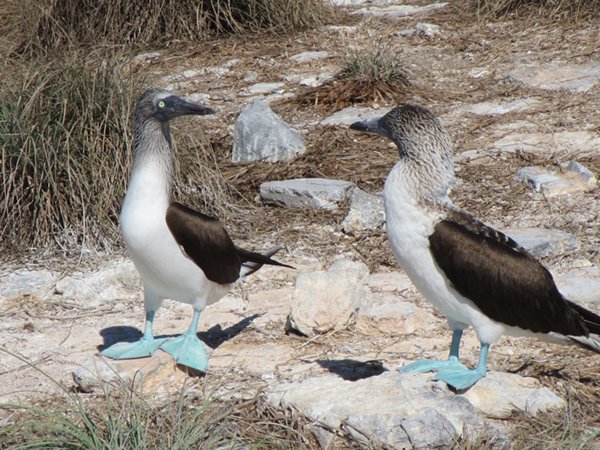
The Brown Booby has completely black eyes and sleek, solid-colored feathers. Note the lime-green feet of the Brown Booby as she stood up to let us take a peek at her egg nestled below.

Beyond the avian population of Isla Isabela, the island is jam-packed with Iguanas of all shapes and sizes! Here’s one we caught up with up close and personal…

The hiking
was extraordinary as well with treks up to a mountain ridge that looks down
over the now deserted Research Station and the small fishermen’s village (green shacks
on beach at upper left)

…as well as inland to a crater lake formed in the caldera of what is now a dormant volcano

We stopped for a timed-selfie on the rocks on the windward side of the island although the crashing waves didn’t perform as dramatically as we’d hoped. (You had to be there, I guess…)
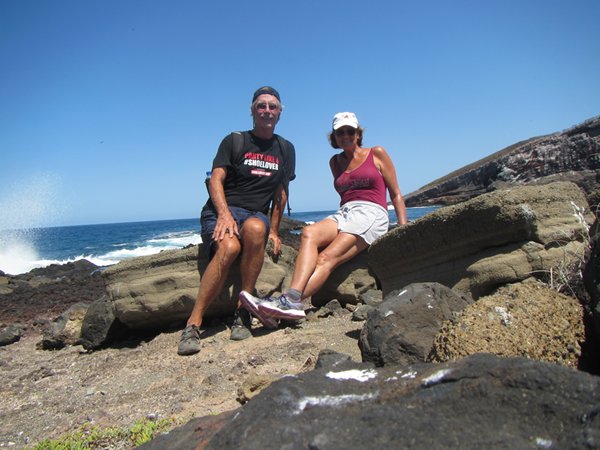
And, back in the fishing village, Peter made two new friends who lived on the island.

We anchored close to two rocky spires on the east side of Isla Isabela called Las Monas which means “dressmaker’s forms” in Spanish. There was great snorkeling here with abundant fish and healthy reefs.

From another
angle, these two spires blend together and, some say, look like a turtle. I thought they looked more like a little
otter lying on his back.
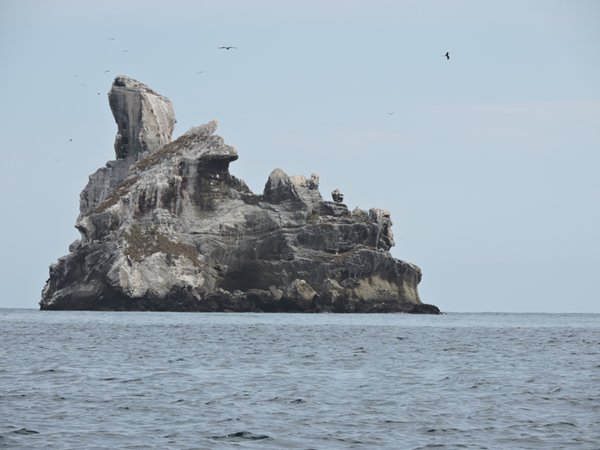
You probably see something completely different! So much for the animal imagery…
Our memories
of Isla Isabela will be some of the best we’ve had to date here in Mexico which
is, rapidly, becoming one of our many “favorite” countries around the
world.
And, now,
it’s time to head for the Sea of Cortez bordered by Baja, the earth’s second
longest peninsula on the west and mainland Mexico to the east.
First, we’ll
make a stop in the city of La Paz to stock up on provisions before entering
this remote region known here as the Golfo
de California rather than the Sea of Cortez. FYI, Cortez is not
exactly a well-liked figure in Mexican history but more on that later. Stay tuned for more adventures...
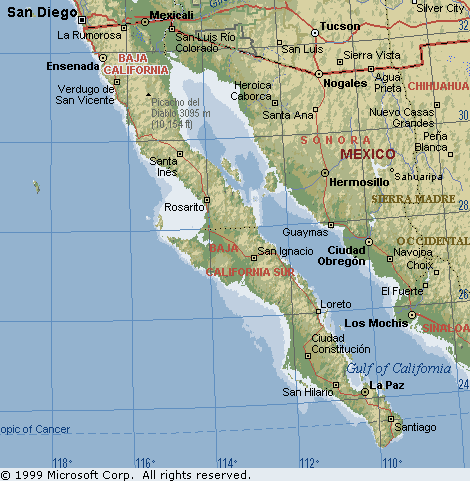
Please do write to us! We love hearing from you. However, if you hit "reply" it sends all the photos back and our band width is very limited so please take the email below and paste it into a new message.
margiebenziger {CHANGE TO AT} gmail {DOT} com
--
--
--